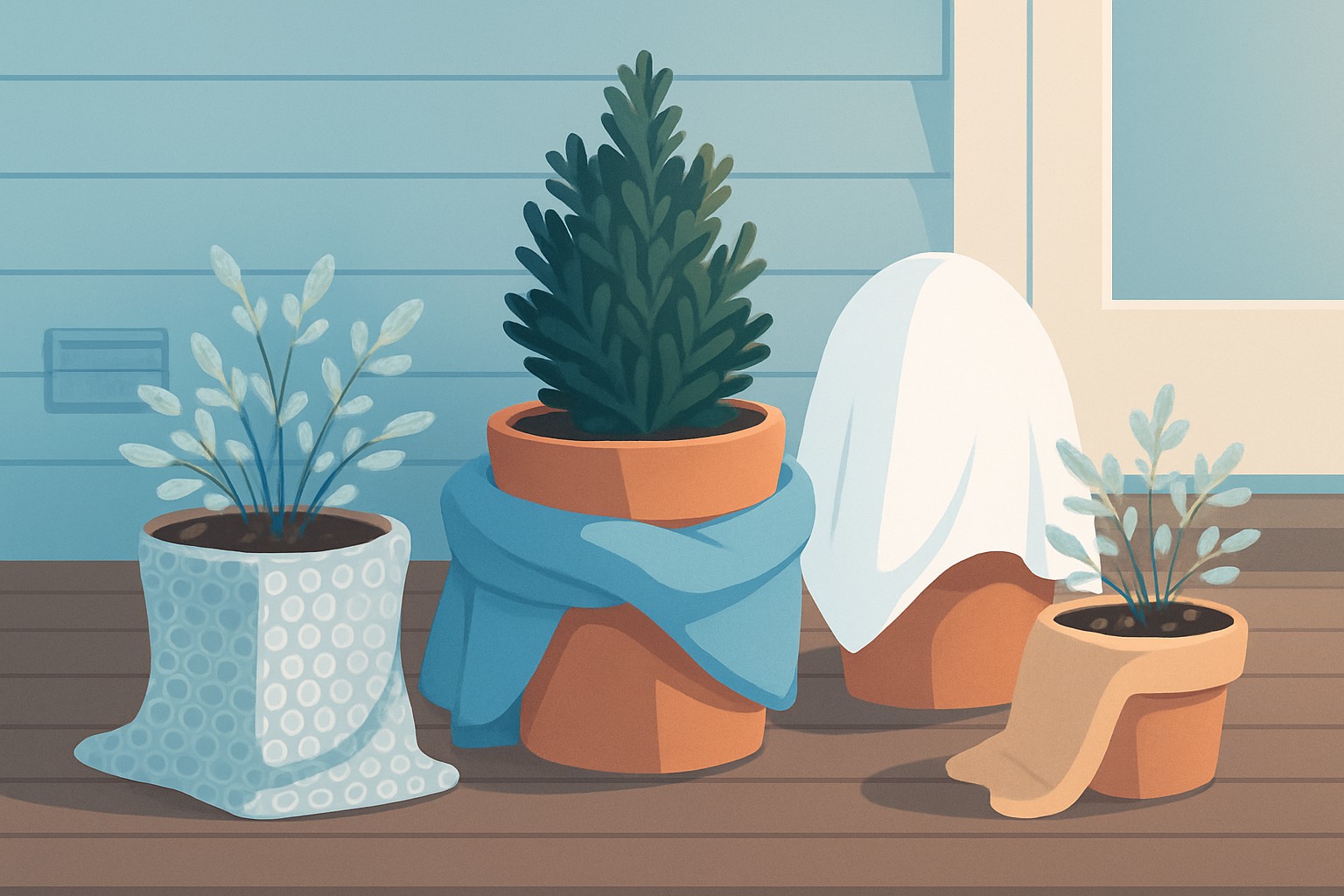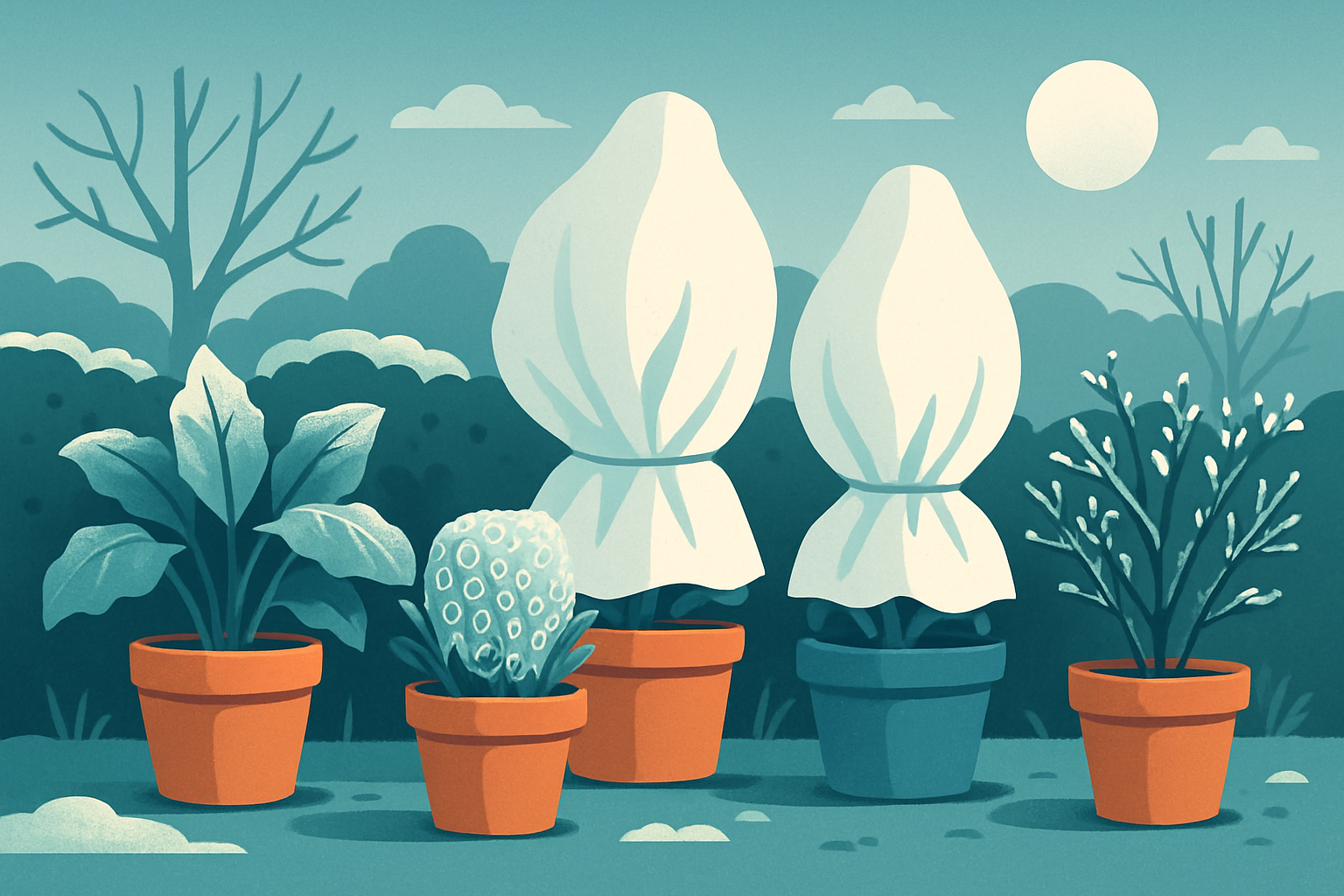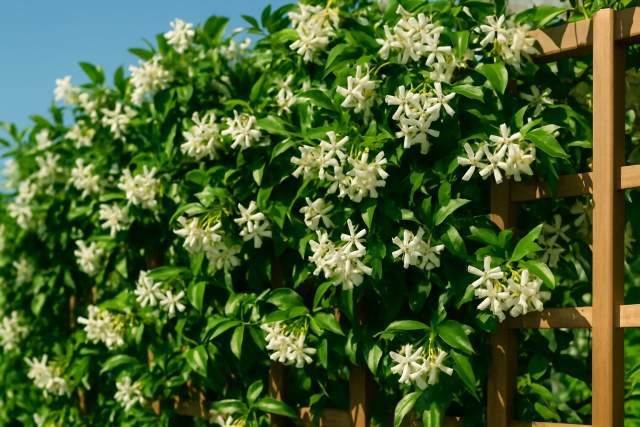How Frost Protection for Potted Plants Saves Them From Cold

When temperatures dip, potted plants take the brunt of frost that can damage their leaves, stems and roots, making frost protection for potted plants essential. Because they’re not firmly planted in the ground these little guys tend to be more exposed and vulnerable.
Potted plants often take the brunt of frost damage since their roots are stuck in a tight spot and out in the open, missing out on the cozy protection that good old soil in the ground offers.
What Frost Really Means for Your Potted Plants and How It Can Sneak Up on Them
Frost creeps in when temperatures dip below freezing and turns invisible water vapor in the air into delicate ice crystals on surfaces like plant leaves and soil. This pesky ice can puncture plant cells and disrupt their normal functions. It often leads to damage or even kills the plant tissue. With potted plants where soil is limited, frost spreads faster. It freezes not only visible parts but also sneaks down to the roots.
Early signs of frost damage often sneak up as black or brown edges on leaves, wilting spots and stems that suddenly feel soft or mushy to the touch.
Why Potted Plants Often Need a Little Extra Frost Protection
Potted plants usually take the brunt of frost a bit harder since they’re out in the open with air all around them. Add to that the pot’s material and the fact that roots don’t get much insulation, and you’ve got a recipe for chilly trouble. Unlike their in-ground cousins, these plants don’t have the luxury of earth shielding them from cold snaps and temperature swings.
- Pots have a smaller root mass that misses out on the natural insulation the ground provides. This means they tend to freeze faster than you might expect.
- Surfaces like ceramic and metal pots conduct cold too efficiently and chill the roots more than you would hope.
- Pots hold less soil and cool down faster overnight, sometimes catching plants off guard.
- When pots are perched off the ground, they lose heat from underneath. This leaves the roots vulnerable to frost.
Key Ways to Provide Frost Protection for Potted Plants (Before Jack Frost Nips at Your Leaves)
Protecting potted plants from frost generally involves juggling physical covers, thoughtful placement and keeping a watchful eye.
- Bring your pots indoors or tuck them into cozy spots like porches or garages where they can rest before frost arrives.
- Wrap those pots snug in insulating materials such as bubble wrap, burlap or thick blankets to retain warmth.
- Apply a thick layer of mulch around the base of your plants. It acts like a sweater for the soil keeping it warm underneath.
- Cover your plants with frost cloths, horticultural fleece or breathable garden blankets on cold nights to protect them.
- Group your potted plants close together so they can share warmth and withstand biting winds better.
When it comes to picking frost protection materials, it’s safest to stick with breathable fabrics that keep moisture at bay and offer a cozy layer of insulation. If you’re watching your wallet, budget-friendly options like bubble wrap, garden fleece or old blankets gathering dust in the closet can often be found at your local garden centers, hardware stores or just a few clicks away online.

Illustration of potted plants wrapped with frost protection materials such as bubble wrap and frost cloth to prevent cold damage.
A Down-to-Earth Guide to Keeping Your Potted Plants Cozy When Frost Shows Up
Getting your potted plants ready for frost might sound like a hassle but once you know the ropes it’s actually pretty straightforward.
- Keep a close watch on weather forecasts regularly because getting ahead of frost dates can save you a lot of trouble down the line.
- Whenever possible, bring those pots indoors, place them in a greenhouse or tuck them into a cozy sheltered nook to protect against frost.
- Wrap your pots snugly with insulating materials like bubble wrap or horticultural fleece and make sure to cover every nook and cranny.
- Drape plants with frost cloth or any breathable fabric you have and pin down the edges tightly to keep chilly winds away.
- Water your plants well before the frost arrives since moist soil holds heat much better than dry soil.
- Group pots close together because plants sharing warmth is a sweet idea and it helps shield them from the cold.
- Check on your plants daily and remember to remove covers during the day to let them breathe. This helps prevent mold and overheating from ruining your plants.
Extra Tips and Frequent Mistakes to Watch Out For (Because We All Slip Up Sometimes)
- Avoid putting plastic sheets directly on plants because they tend to trap moisture which can lead to freezing damage.
- Try not to overwater your plants during cold spells. In my experience, soggy roots suffer far more from frost.
- Don’t leave pots sitting flat on cold concrete or metal surfaces overnight. It is better to place them on wooden pallets or add some insulation for extra care.
- Keep an eye out for pesky pests and rodents that like to hide under covers or insulated pots when winter arrives.
As the chilly months roll in, giving your plants a little extra TLC can really help them tough it out against the frost. Be sure to water just enough—think Goldilocks, not drowning your green friends—and add a balanced fertilizer before the frost arrives to give them a much-needed boost. Snipping away any dead or weak growth isn’t just for looks. It lightens their load and helps them stay strong. Plus, keeping plants clean and managing those pesky pests goes a long way to support their overall health and makes it easier for them to bounce back if frost does bite.
Top Potted Plants That Know How to Brave Cold Climates and Frost-Prone Spots Like a Pro
Choosing hardy plants that can tough it out in cold weather really helps cut down on the amount of frost protection for potted plants you’ll need.
- Boxwood: evergreen shrubs that seem to laugh in the face of cold weather and hold their shape like champs in pots.
- Hellebores: often nicknamed Christmas or Lenten roses these perennials brave the late winter chill and don’t flinch at a bit of frost.
- Lavender: fragrant little charmers that usually shrug off the cold and add a touch of magic to bleak winter days.
- Juniper: conifers famous for their tough-as-nails cold tolerance and distinctive, eye-catching foliage.
- Rosemary: a hardy aromatic herb that typically weathers mild frost without batting an eye and needs little to no babysitting.




